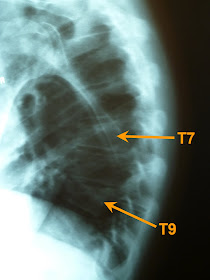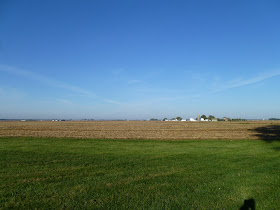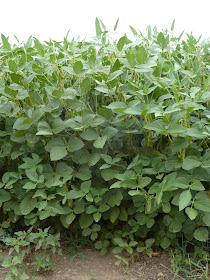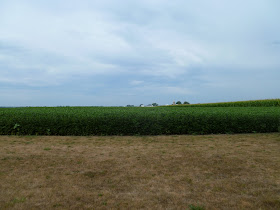Our family's attempt to present one thing very clever, or two things moderately clever, or three things very dull indeed...
Tuesday, December 25, 2012
Tuesday, October 2, 2012
Beans in the backyard 2012, Harvest!
September 30
Sunday, September 30, 2012
English postcard #8
Fountains Abbey, North Yorkshire
I hope you don't mind if I continue to "send postcards" from England even though we're home by now. I also hope you don't mind another picture from Fountains Abbey. I thought this view was interesting in that four arches could be lined up and captured at the same time. I don't think I'll ever tire of arched window and doorways, perhaps because they're so rare in our part of the world.
Beans in the backyard 2012, weeks 19, 20, & 21
September 10
September 18
September 23
Even though we've had a pretty severe drought this summer, Farmer Wagenbach appears to have been blessed with beans that have a fair number of pods and seeds. About the only thing that would reduce the harvest at this point would be storm damage that might make harvest difficult.
Thursday, September 27, 2012
An Experiment in Greenwich
I'm one of those people who enjoys watching the odometer on the car change from lots of nines to lots of zeroes, so when we decided to visit the Royal Observatory in Greenwich I knew I had an opportunity to do a little experiment. In case you didn't realize, the Prime Meridian at Greenwich was established by Sir George Airy in 1851 and recognized by most of the world in 1884 as the zero longitude line for the earth, separating the Eastern Hemisphere from the Western Hemisphere. As you can see in the photo below, the line is clearly marked on the ground and on one of the buildings of the observatory, so one can easily situate himself atop this important landmark.
I did just that with my trusty Garmin Nuvi GPS device confident I'd see so many zeroes it would make me giggle. The photo below shows the device laying on the ground directly on top of the Prime Meridian.
I knew that all GPS devices have some error, and that automotive devices like mine are not as accurate as devices that might need resolution in inches. I guessed the non-zero portion of my reading represented that error. Since I'm a curious sort, I next set about trying to calculate how much distance is equivalent to the 0.00152 degree "error" displayed by the GPS. Since the earth is not perfectly round, this calculation is not as trivial as it seems. Fortunately there are many published estimates of the equatorial radius and the polar radius of the earth, so estimating distances at Greenwich should be possible.
My first attempt assumed the radius of the earth at Greenwich was equal to the average of the polar and equatorial radii. That's a pretty rough assumption, but I was still surprised when I calculated that 0.00152 degrees was equivalent to about 105.21 meters on the ground. That's a significant error that's big enough to put someone on the wrong street if it occurred while navigating. I decided to try a different calculation.
My second attempt assumed the earth has an ellipsoid shape with the equatorial radius representing the semi-major axis, while the polar radius represented the semi-minor axis. The radius of the circle of latitude passing through Greenwich is a little smaller by this method, but the distance equivalent to 0.00152 degrees is only a few centimeters smaller at 105.17 meters. Given the agreement between these two calculations, it appears that my GPS thinks I'm 105 meters west of the prime meridian when I'm standing on the Royal Observatory's Prime Meridian.
What happens when I plug that latitude and longitude into an online map? Bing seems to have the highest resolution image of the Royal Observatory, so this is what you'll see if you enter 51.47792, -0.00152 in the search bar for Bing Maps. (Brief tangent: Bing's image of Greenwich seems to have been taken early this summer as you can see the Olympic beach volleyball venue partially constructed in the park between the Royal Observatory and the Queen's House.)
You'll have to trust me that the dot on the image above is only a meter or two away from where I was standing when I took the photo of my Garmin. You can try the numbers in Google Maps or Mapquest, but the results should be similar to what you see above. Why do the online map services agree with my Garmin, but none of them seem to realize that the line on the ground at the Royal Observatory is the true 0.00000 longitude mark?
After reading a bit on the subject of global positioning systems and international terrestrial reference frames, I learned that even though Airy placed the line on the ground in 1851 where the current meridian is marked, by the late 1950s the Applied Physics Laboratory at Johns Hopkins University had developed the first satellite navigation system (TRANSIT) that would ultimately move the prime meridian upon which our modern navigation systems are based. Although TRANSIT was intended to agree with Airy's prime meridian, some assumptions in the definition of its location caused other landmarks around the world to be shifted relative to their location based on Airy's work. Eventually the International Reference Meridian (which was based on locations relative to TRANSIT) defined by the International Earth Rotation and Reference Systems Service came to be accepted as the prime meridian upon which our navigation systems are based, including my Garmin GPS. Where is the International Reference Meridian relative to Airy's Prime Meridian at Greenwich? About 102.5 meters east.
That seems to indicate that my GPS unit has an error of about 2 to 3 meters based on my earlier calculations. That much error seems more reasonable. I suppose one could walk 102 meters east of the meridian at the Royal Observatory until the display of a GPS unit read 0.00000, but for some reason that doesn't sound quite as charming. I probably wouldn't even giggle.
Thursday, September 20, 2012
English postcard #7
Broad Sanctuary, Westminster, London
These sites that I've seen many times in photographs really are bigger in real life. I'm confident we're not in Tremont.
English postcard #6
Seven Sisters, East Sussex
Often mistaken for the White Cliffs of Dover, the Seven Sisters further west is preferred by many as a stunning example of the chalky southern coastline. We didn't make it to Dover, so we can't compare directly, but we found this view particularly satisfying.
Wednesday, September 19, 2012
English postcard #5
Arlington Row, Bibury, Gloucestershire
William Morris called it "the most beautiful village in England," and I think he had a pretty good eye for beauty. This row of cottages was built in 1380 as a monastic wool store and converted into a row of weaver's cottages in the 17th century. Please ignore the satellite dish.
Tuesday, September 18, 2012
English postcard #4
St. Michael's Mount, Cornwall
We were blessed with favorable tides and sunny skies on our visit to St. Michael's Mount, an island that is connected to the mainland by a causeway that is covered by the Atlantic Ocean at high tide. We crossed when the tide was about at its lowest, enjoyed a tour of the castle on the mount, and crossed back less than two hours later before the causeway was closed to foot traffic.
Friday, September 14, 2012
English postcard #3
Fountains Abbey, North Yorkshire
This abbey and the adjoining grounds of Studley Royal was one of the first historic sites Karen and I visited several years ago, but our girls had never enjoyed them. The remaining structures of the Fountains Abbey grounds suggest a productive and prosperous community several hundred years ago. One can only imagine the experience of visiting a place like this back then.
Wednesday, September 12, 2012
English postcard #2
Lake Windermere, Cumbria
For our friends back in Tremont we offer this view of the REAL Lake Windermere, not the 5-acre substitute in central IL. This lake is truly a holiday destination, and we were glad to visit after the crowds had subsided. The photo was taken from the roadside on our way over "The Struggle," a narrow road leading to the Kirkstone Pass.
English postcard
Lyme Park, Cheshire
We don't have many buildings like this in Illinois, and those that are this big and ornate are government buildings built with our taxes. This building however, is a home. At least it was originally built as a home when construction began in the late 16th century, but was donated to the National Trust in 1946 so we can all tour it and enjoy it. Jane Austen movie fans may recognize this building.
Thursday, August 30, 2012
Beans in the backyard 2012, weeks 16 & 17
August 19
This closeup view shows large pods rapidly filling at the upper nodes.
August 26
These plants still have a long way to go before harvest, but their progress is persistent and encouraging.
Tuesday, August 28, 2012
Now I REALLY feel old
Even though I don't remember much about the first few years of my life, I have no trouble identifying with the decade of my birth. The preceding decades, however, have always seemed like ancient history. As a young man, I remember being startled by the realization that more years had passed since my birth than had passed between the end of World War II and the day I was born. In my mind, WWII happened a long time before I was born. In reality, it wasn't very long.
 |
| My great grandparents, Samuel and Sophie Riggenbach |
Tuesday, August 14, 2012
Beans in the backyard 2012, week 15
August 12
This shot gives you a better view of the nice pod and seed development all along the stalk. Our only rain this week was a 0.15" shower on Wednesday, but we're still thankful for any little bit that falls this summer. Rain and moderate temperatures will help add seed mass at this stage, so we'll continue to seek God's mercy on behalf of Farmer Wagenbach's beans.
Sunday, August 5, 2012
Beans in the backyard 2012, week 14
August 5
Our only rain this week came early this morning and totaled 0.15 inches. Despite the drought we've been experiencing, I'm encouraged by the number of pods that have survived and continue to develop on these plants. Nonetheless, we'll continue to pray for rain for Farmer Wagenbach's beans and the other crops in the area.
Monday, July 30, 2012
I love receiving mail...
...especially when it's good news from the County Health Department.
Once again, our downstream neighbors breathe a sigh of relief.
Sunday, July 29, 2012
Beans in the backyard 2012, week 13
July 29
Although some of the pods have only two seeds, the seeds are continuing to grow. We received 0.6" of rain this week split between two showers on the same day (thanks for your prayers) so the plants were able to supplement the moisture they're pulling from the ground. As the seeds add mass during this stage, the vegetation will supply about half of the nutrients needed while the other half will come from the roots. Please continue to pray for rain as this stage is crucial in determining the size of Farmer Wagenbach's harvest. For those keeping score at home, I'm describing today's growth as V17 and early R5.
Wednesday, July 25, 2012
Back x-ray update
It's been eight weeks since I fell off my bike so my chiropractor suggested we take a couple new x-rays to see how my bones are healing. He thinks the bones are showing good progress, but are not yet completely healed. Since he gave me a 12 week estimate initially, I'm not disappointed.
Interestingly, he noticed something else that had escaped his attention eight weeks ago. It appears that I broke two vertebrae instead of just the one we previously noticed! As you can tell in the image below, T7 has a wedge shape similar to T9, which is indicative of a compression fracture.
 |
| After (May 2012) |
Fortunately, two broken bones are treated the same way as one, and my prognosis has not changed. I'm grateful for noticeable progress in flexibility, strength, and comfort, although I suppose I'd agree that my back doesn't feel completely healed yet.
 |
| Before (2009) |
Sunday, July 22, 2012
Beans in the backyard 2012, weeks 11 & 12
June 15
At this stage, pods of at least 3/16" are visible at the upper nodes and larger pods are forming at the lower nodes. My amateur scoring is V13 and R3. I'm told the plant is very vulnerable to temperature and moisture stress for the next few weeks. Coincidentally, we are experiencing temperatures well above normal along with the lack of rain mentioned above.
June 22
The stalks measured 39 inches tall this week and 15 fully emerged trifoliolates were visible. If you look carefully, you can see pods that are about an inch long on the nodes that are about fourth from the top, so if we're not there already, I would say we're pretty close to the R4 stage.
Here's an image of the maturing pods on some of the middle nodes. I don't know how this crop compares to a normal year, but I think it looks encouraging considering the heat and drought we're experiencing. Now would be a good time to pray for rain for Farmer Wagenbach's beans and the other crops in the area.
Saturday, July 21, 2012
A few observations on 2012 weather so far
Even though our temperatures here in Central Illinois have seemed consistently above normal since last winter, I thought it might be interesting to look at the data to see just how warm it's been. The data behind both the charts shown here is the daily mean temperature as measured at the Peoria International Airport; the mean temperature being a simple average of the daily high and low temperatures.
The first chart shows the actual daily means plotted as the red curve, and the historical average daily means plotted in blue. Since the chart begins at January 1, the mild temperatures we experienced in October, November, and December 2011 are not obvious in this data. January of this year had a couple of brief cold snaps, February had even fewer days below normal, and most of March was part of a 35-day string of days whose means were significantly above average including 6 record daily highs. Below normal rainfall accompanied our current 24-day string of above normal temperatures to create drought conditions as severe as any I can remember.
 |
| (click to enlarge) |
This next chart shows the deviation of the actual mean temperature from the historical mean as the light blue bars that in 2012 have been warmer than the historical mean over 81% of the days so far. Although the temperature has been much hotter lately, this chart makes it obvious how much warmer than normal the temperatures in March were. Some days were over 30 degrees F hotter than normal! No wonder the plants started budding early this spring!
 |
| (click to enlarge) |
I don't predict the weather, but unless the next five months are much colder than normal, our cumulative average should remain significantly above historical levels throughout 2012.
Saturday, July 14, 2012
Beans in the backyard 2012, week 10
July 8
The big new this week is the appearance of pods! You can see some beginning to form at the juncture of the lateral branches in the middle of this image. I apologize that the central stalk of the plant is not is focus. Since we've had very hot weather and minimal rain, we'll watch these (and hopefully other) pods develop to try to determine whether these plants are suffering heat stress at this critical time in the formation of the crop.













































